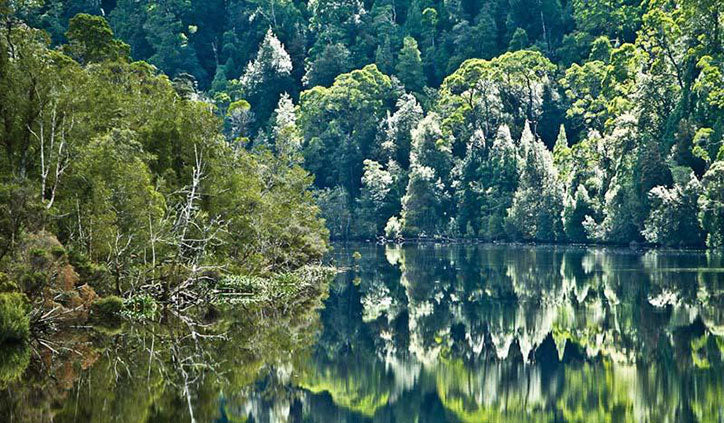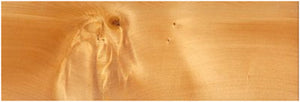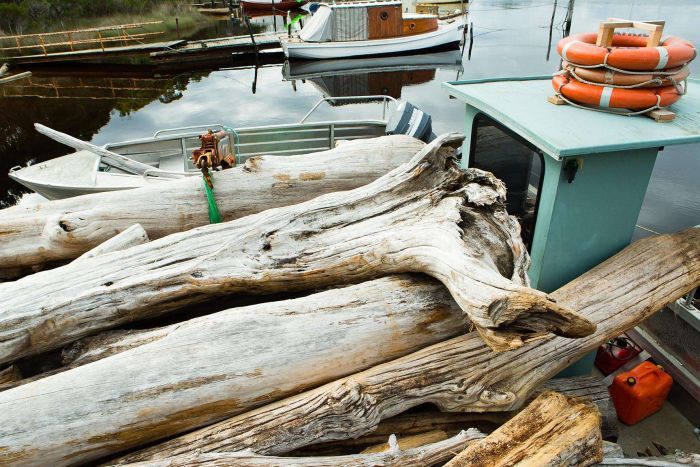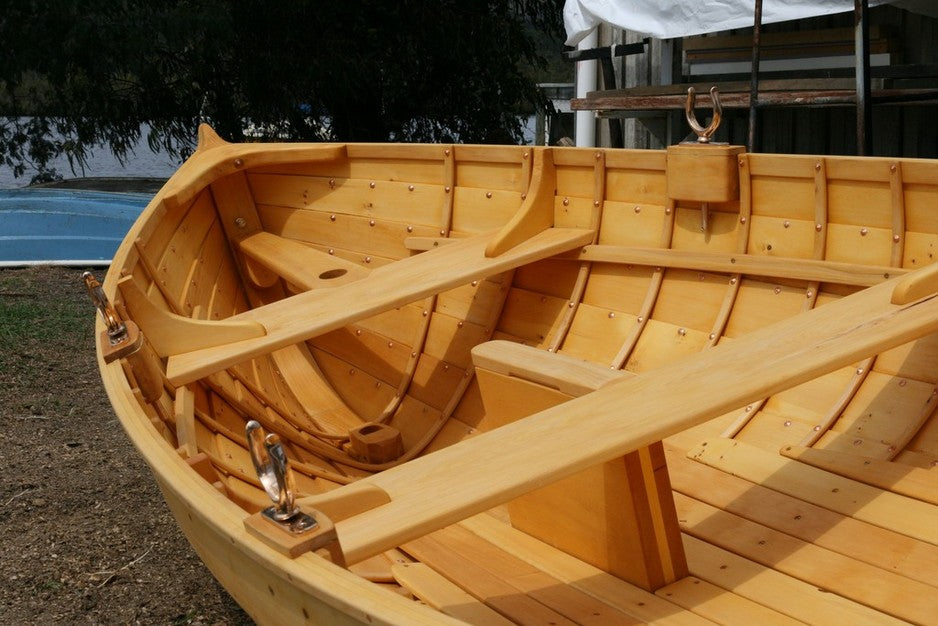What is so special about Huon Pine?

For starters Huon Pine only grows in the wet, temperate rainforests of South West Tasmania – on the whole planet! ‘Lagarostrobus franklinii’ (its proper name) is not actually a pine and is the only member of its family, so a pretty unique tree which grows extremely slowly, averaging just 1 millimetre in girth per year. They can grow to be 2,500 years old which means some of them started life BC! Add to this the fact that they do not start to reproduce until 600 to 800 years of age and you have a very special tree whose timber also has remarkable properties. The timber has a very high oil content, methyl eugenol to be precise, which renders it impervious to insects, waterproof, and imbues it with its characteristic sappy perfume. The high oil content also means the timber can be bent, shaped, worked and sculpted without splitting and finishes to a superb, fine lustre. Pale straw coloured when first cut, it ages to a rich honey gold. Woodworkers love it!
Click here to view our complete range of Huon Pine Products >>
A little bit of history
 The early settlers discovered the remarkable properties of Huon Pine and saw its potential for boat building, resistant as it was to those perennial problems of the boat builder, marine borer and screw worm. It turned out to be the best boat building timber in the world and was exploited heavily in the early days, driving a huge industry based on this ‘green gold’.
The early settlers discovered the remarkable properties of Huon Pine and saw its potential for boat building, resistant as it was to those perennial problems of the boat builder, marine borer and screw worm. It turned out to be the best boat building timber in the world and was exploited heavily in the early days, driving a huge industry based on this ‘green gold’.
Interestingly, concern for the future of these venerable giants started early in the last century – even back then it was apparent that there would be no next generation of trees to be had, their slow growth precluding the possibility of plantation farms.
The felling of green Huon Pines stopped completely in the 1970’s after a consensus that it was neither sustainable nor prudent to cut down trees that were 1000 years old. However, a careful stockpiling operation was begun when trees were felled and collected prior to the flooding of several valleys to create dams for hydro electric schemes. For decades these logs were tied into huge rafts and left to float unperturbed on the water until needed. The stockpile created when Lake Gordon was flooded in 1972 still supplies the majority of logs released for use each year.
The retrieval of stumps left over from old logging is another source of salvage timber and led to the discovery of tons of ancient buried Huon pine logs, some dated at 38,000 years old and still intact despite being buried in the damp earth all that time.


Who controls the stocks?
85% of remaining Huon Pine forests are conserved in National Parks while 15% is managed by Forestry Tasmania for salvage. Forestry Tasmania controls and surveys ALL salvage/harvest sites and only 3 sawmills are licensed to process logs.
Is it sustainable?
Because of the strict control by Forestry Tasmania and the granting of only 3 licenses to cut Huon pine sawlog, it is estimated that the supplies of salvaged dead timber will last for another 2 generations. After that these ancient giants in the remaining forests will be left in peace to carry on long after we have gone – we hope that future governments adhere to this policy, and now is the moment to say “hats off to Bob Brown” for all he and his supporters did to protect the remaining forests and wild rivers of South West Tasmania.
What is Huon Pine used for now?
As mentioned, Huon Pine is the boat building timber nonpareil and remains so today. It is much prized for furniture making and cabinetry work especially the bird’s eye and figured timbers. It is also used for small artefacts, homewares, souvenirs and creative woodcraft of which we have a varied selection here at Australian Woodwork.

















































































































I enjoyed the information you have placedon the Huon Pine. A truly wonderful and beautiful tree with such unique properties.
I found trees in California crazy what is made with tree
For James, there is a book, "the ship that never was " by Adam Courtenay that details the theft of the last convict built huon pine ship from Macquarie Harbour and its journey to Chile. A great read about the lives of the Tasmanian convicts.
I have heard that Dundee shipbuilders recruited Tasmanian convicts to build ships from Huon pine, providing the convicts with decent food and living conditions – where can I obtain more information on this?
I live in WA. Is Huon Pine resistant to termites?
Many thanks Asha